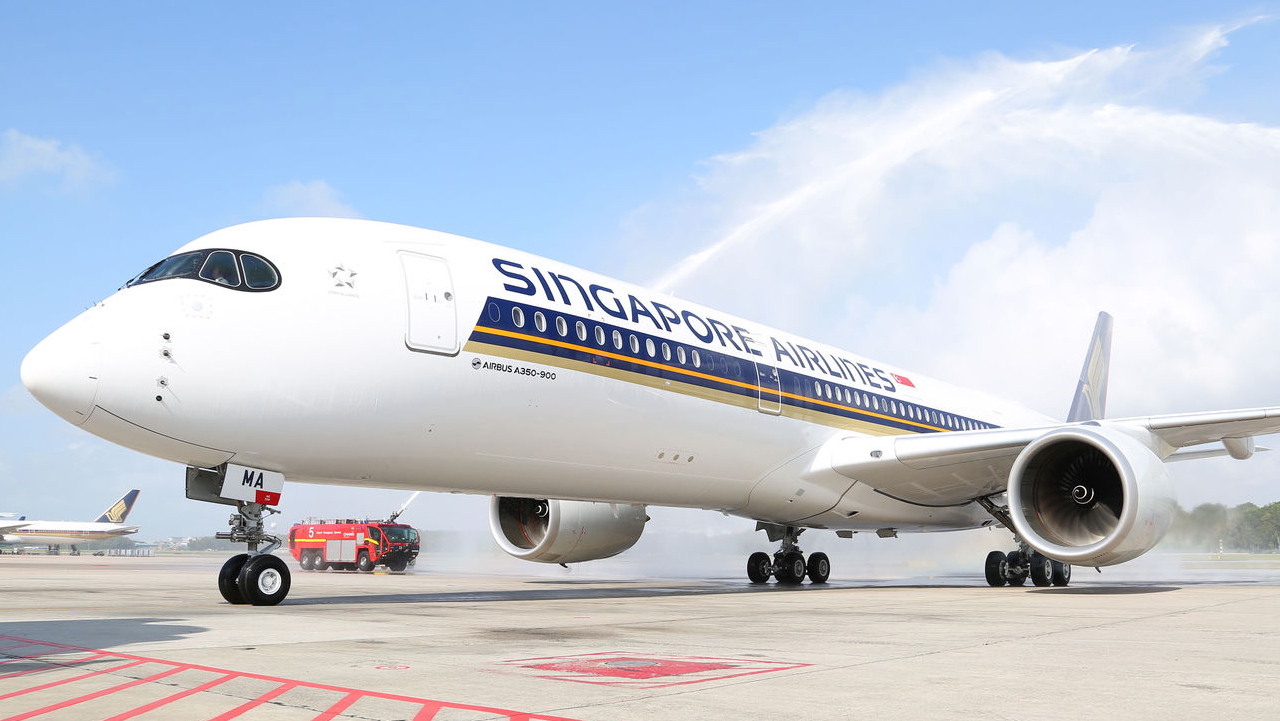|
Singapore Airlines, in partnership with the
Civil Aviation Authority of Singapore (CAAS), has started
operating a series of 12 green package flights over a
three-month period on its non-stop San Francisco-Singapore route.
Featuring SIAs latest-generation and most fuel-efficient aircraft
the Airbus A350-900 - the green package flights are the first
in the world to combine the use of biofuels, fuel-efficient
aircraft and optimised flight operations.
CAAS is facilitating the
use of these optimised flight operations and Air Traffic
Management (ATM) best practices which reduce fuel burn and carbon
emissions for the flights.
The first of the 12 flights, SQ31, departed San
Francisco at 1121hrs (San Francisco Time) on 1 May 2017 and
arrived in Singapore at 1910 hrs (Singapore Time) on 2 May with
206 passengers on board.
The initiative supports the efforts under the
Sustainable Singapore Blueprint (SSB) 2015 to develop Singapore as
a Leading Green Economy, where businesses adopt more efficient and
sustainable processes and measures to reduce their resource and
environmental impact, and contribute towards a Sustainable
Singapore.
The flights also raise awareness of sustainable
biofuels for aviation and provide the industry with valuable
insight on the economics, logistical requirements and performance
of biofuels.
Over the three-month period, flight SQ31 will be
powered by a combination of HEFA (Hydro-processed Esters and Fatty
Acids), a sustainable biofuel produced from used cooking oils, and
conventional jet fuel. The biofuel, produced by AltAir Fuels, will
be supplied and delivered to San Francisco by SkyNRG in
collaboration with North American Fuel Corporation (NAFCO), a
wholly owned subsidiary of China Aviation Oil (Singapore), and
EPIC Fuels.

According to the International Air Transport
Association (IATA), sustainable biofuel is a promising
technological solution which will reduce the airline industrys
carbon emissions. It has been certified safe for use in commercial
aviation since 2011, and has been in use by airlines in other
parts of the world.
In collaboration with CAAS and air navigation
service providers along the flight route, these flights will also
employ optimised flight operations, which will reduce fuel burn
and carbon emissions. These optimised flight operations include
User-Preferred Routes (UPRs), Dynamic Airborne Reroute Procedure
(DARP), 30/30 Reduced Oceanic Separation and Time-Based Arrivals
Management.
User-Preferred Routes (UPRs) refer to
flight routes during the oceanic phase of flight customised based
on factors such as weather and aircraft performance. Dynamic
Airborne Reroute Procedure (DARP) is a procedure that allows for
periodic modification of a flights lateral profile, based on
updated weather forecasts, to save fuel. 30/30 Reduced Oceanic
Separation refers to measures allowing for reduced separation
distance between aircraft during the oceanic phase of flight.
Time-Based Arrivals Management refers to traffic flow management
procedures and automated decision support automation which reduce
holding time in the air for arriving flights.
Other than the ongoing green-package flights,
SIA and CAAS have worked together in recent years on several other
carbon emissions-reducing initiatives in international aviation.
In January 2010, both organisations participated in the Asia and
Pacific Initiative to Reduce Emissions (ASPIRE2) programme with a
demonstration flight from Los Angeles to Singapore via Tokyo which
yielded fuel savings of 6%.
In May 2011, CAAS and SIA launched regular
ASPIRE flights on the Los Angeles-Singapore route. Over the years,
routes to various destinations in the Southwest Pacific, including
Auckland, Christchurch, Melbourne and Sydney, were incrementally
added to the ASPIRE programme, the latest addition being SIAs
Capital Express service between Singapore, Canberra and
Wellington in September 2016. The series of 12 green package
flights will also adopt ATM best practices from the ASPIRE
programme.
Singapore Airlines is also a member of the
Sustainable Aviation Fuel Users Group (SAFUG), which was
established in 2008 to accelerate the development and
commercialisation of sustainable biofuels for aviation, derived
from environmentally and socially-sustainable sources.
Singapore Airlines fleet is already among the
most modern and fuel-efficient in the world. We now want to push
ourselves further and are embarking on this initiative to help
promote the use of sustainable biofuel in an operationally and
commercially viable manner. This is in line with our long-term
commitment to further reduce carbon emissions while improving the
efficiency of our operations. This initiative is especially
memorable as our first biofuel flight departed from San Francisco
on 1 May, when Singapore Airlines celebrated its 70th
anniversary, said SIAs Chief Executive Officer, Mr Goh Choon
Phong.
See also:
Tony Fernandes (AirAsia) and Gary Chapman (Emirates) Talk Aviation
@ WTTC Global Summit 2017 - HD Video and
Whats Going to Happen to The Dusit Thani
Bangkok Hotel? HD Video Interview with GM as well as other
HD Videos
and
Podcasts.
|
Headlines: |
|
See latest
HD Video
Interviews,
Podcasts
and other
news regarding:
SIA,
Singapore Airlines,
Sustainable,
A350.
|
